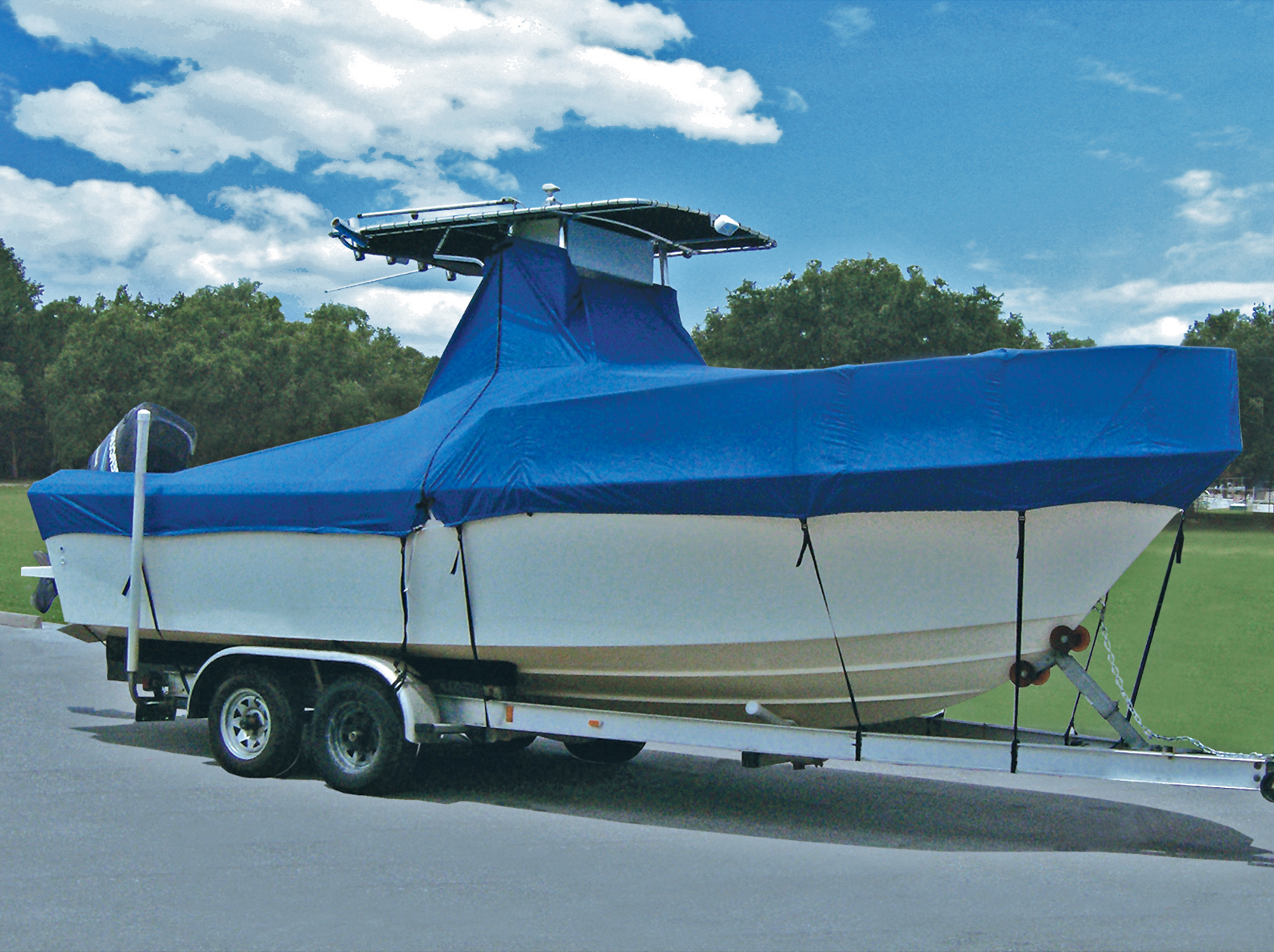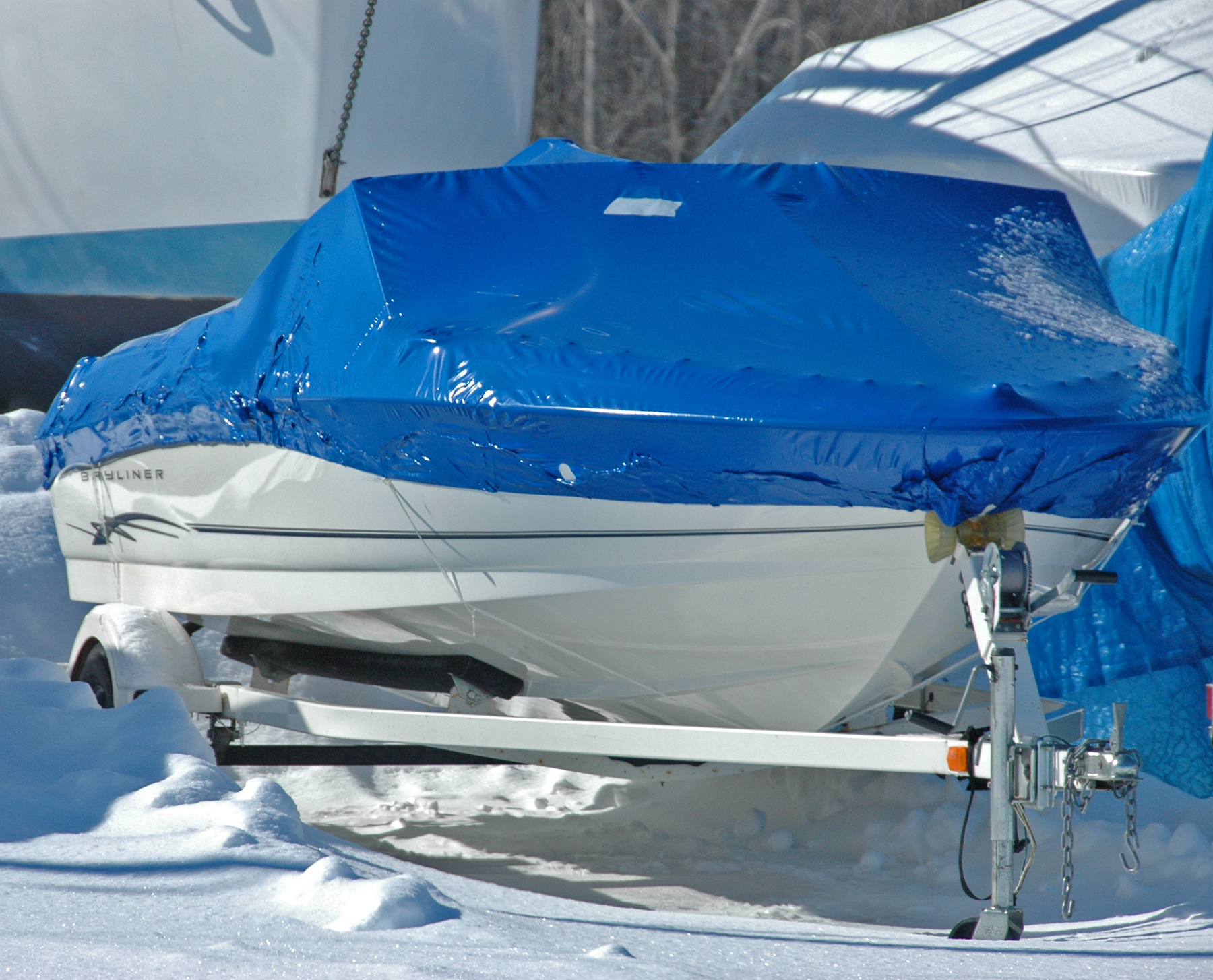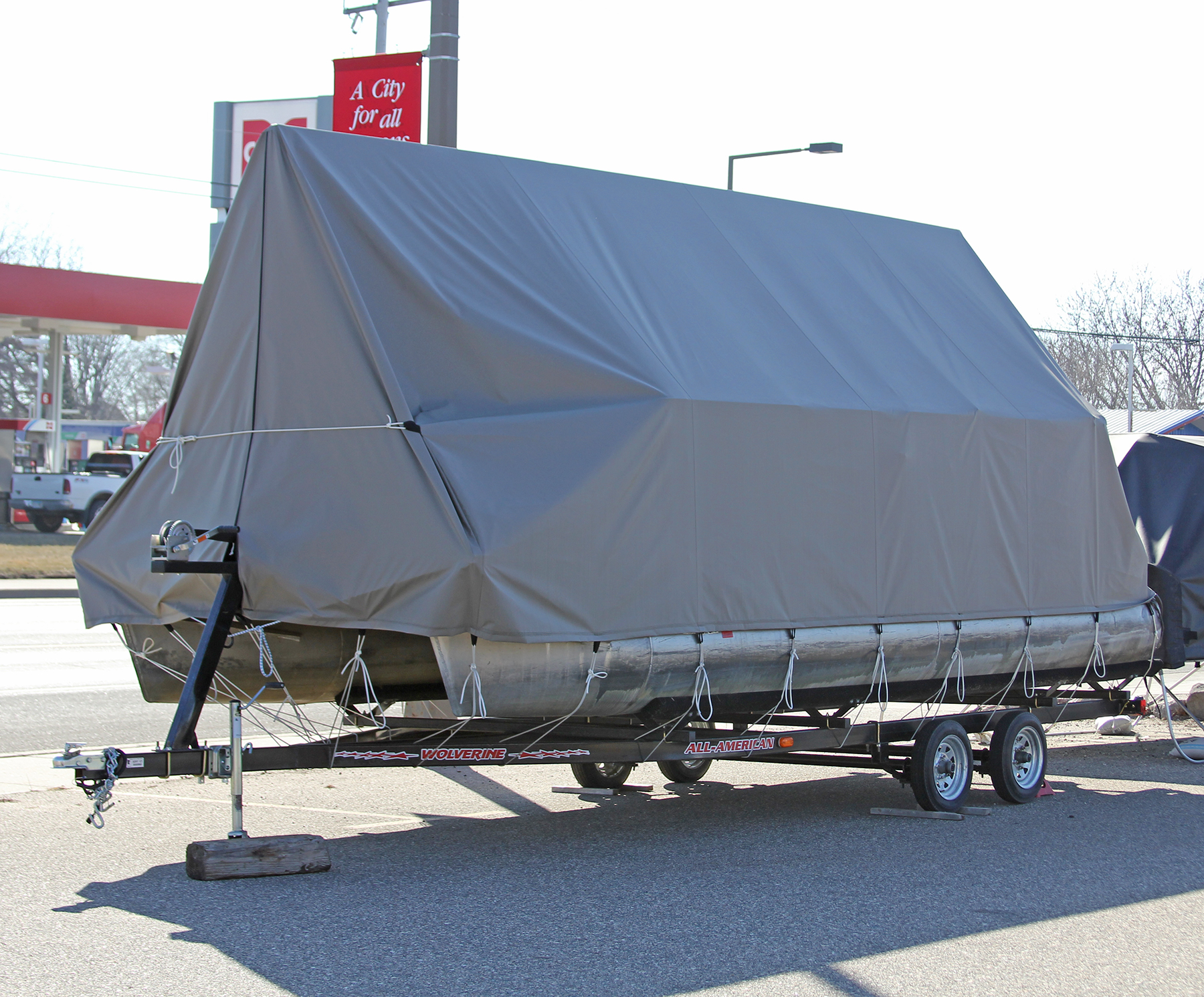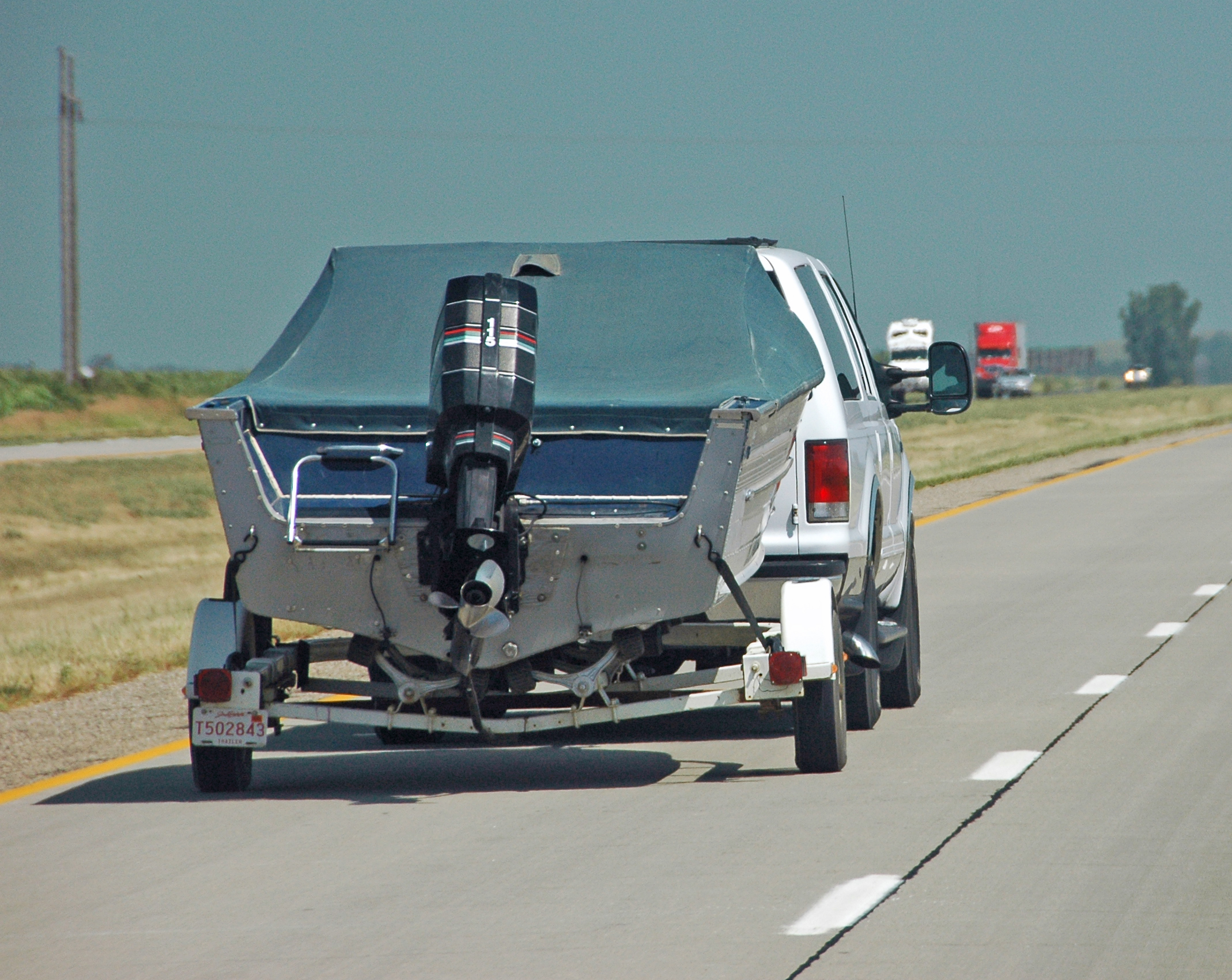Seeking Cover: Selecting The Best Boat Covers
Dan Armitage explains different types of boat covers, materials shrink-wrapping for winter boat storage.
It's that time of year across much of North America - particular Canada and the Northern U.S. states - when boaters begin thinking about off-season storage options and protecting their boats from the elements during the late Fall and into the winter months. No matter where your vessel will spend the winter, inside or out, without a cover separating it from these harsh elements, it will begin to age immediately. Outside, most of the damage will come from the sun, followed closely by moisture. But the aging process isn’t limited to those two factors, nor does inside storage eliminate the need for a protective cover.
When outside, both aluminum and fiberglass – not to mention seat and carpet fabrics -- suffer from the powerful UV rays from above, and when water enters the picture, followed by dust and dirt, things start breaking down fast. Even when the boat is in covered storage during the off-season, a cover pays dividends by protecting from dust, insects and critters. And once you hit the highway with your boat in tow, a whole new set of threats enter the scene.

Above: Boat covers can either encompass the whole boat stern to bow, or be custom cut covers to fit around T-Tops and other features, sized to the exact beam and length of the vessel that is being stored for the winter. Photo: Dan Armitage.
Top 5 Reasons To Consider A Boat Cover
There are five major reasons you want to have your boat covered:
1) Protection from UV rays. The sun is merciless in its attack on just about everything under it. Fiberglass hulls and vinyl upholstery and consoles take the worst beating, but even aluminum suffers under the sun. The rays also break down the plasticizers that keep vinyl supple.
2) Protection from water. Water breeds mildew, mold and rot. When water is allowed to stand for any amount of time, organisms breed, including bacteria that can attack parts of the boat, especially carpet, wood and vinyl. Mold and mildew actually feed on natural fibers in carpeting, such as cotton, and while they won't eat man-made materials like nylon or polyester, they will eat through dirt and other organisms that are left between the fibers, which can be just as bad.
3) Protection from dirt and debris. Dirt, dust, airborne seeds, leaves, twigs, and insects all damage a boat if left to their own ways. Leaves and seeds are a problem to clean out, and will decompose, causing dampness, mold and mildew. Debris can clog drains, causing the boat to retain water that causes problems noted in reason #2 above. While being trailered, covers can offer some protection to both the interior and exterior from flying rocks and gravel.
4) Protection from critters. Rodents like mice, rats and squirrels leave waste and can make meals or nests out of wire coatings, vinyl seats, carpeting or seat filling. Gulls, sparrows, starlings and other birds can do that and more.
5) Protection from vandalism. Covers represent a barrier to would-be thieves. They can't see what's in the boat, and they have to physically remove the cover to access it.
Types of Boat Covers
There are some half dozen fabrics of various weights that the majority of modern boat covers are made of these days, and each is suited for a particular set of needs and budgets. These include 100% cotton canvas in weights from 6 to 15 ounces; cotton/polyester blends in weights of 6 to 15 ounces; 100% polyester in weights of 6.5 to 11 ounces; coated polyester in weights of 6.5 to 10 ounces; vinyl-coated acrylic in weights of 6 to 16 ounces; and 100% acrylic in weights of 7.5 to 10.5 ounces.
In addition, mass-marketed (and a few custom) tops are also available in 100% nylon, polyethylene, and spun-bound olefin. The latter, which goes by its registered name “Tyvek,” is best known as the "tear-proof" paper-like material used in Federal Express mailers, a light-weight fabric with properties that allow air to pass through, while remaining water- and vapor-proof.

Above: Shrink wrapping is a popular and effective alternative to traditional boat covers for off-season boat storage. Photo: Dan Armitage.
The majority of the covers sold for recreational watercraft today are made from the first six fabrics listed above in the weight ranges given. Some of the most popular are known by names given to them by the fabric manufacturers, such as "Sunbrella," which is acrylic; “Harbor Time,” which is an acrylic-coated polyester; "Top Gun," which is polyester; and "Aqualon," which is vinyl-coated polyester. Each type of cover material -- including the venerable blue plastic tarp -- is capable of offering a degree of protection under certain conditions. Some are simply suited to perform better in certain circumstances.
Selecting the Proper Top
The four most important features offered by a boat cover, depending on its primary purpose, are strength, durability, water repellency and breathability.
If you live in the Pacific Northwest, for example, where it rains a lot, then water repellency will be most important, and a vinyl-coated cover may be the “top” material for your needs. It may not breathe as well as other fabrics, but the vinyl coating will do the best job of shedding rain, and you can build-in vents to keep air circulating under the cover.
If you live in the south or west, where the sun is more of a threat than rain, a top with cotton content may not hold up for very long to the intense UV rays, especially if it has not been treated with the proper UV inhibitors. And because water repellency often isn't as much of an issue in some southern locations, your top cover choices may be acrylics or polyesters.

Above: Even the best boat cover made of the most durable materials will fail unless it has the proper structural support to allow it to stand up to the elements and shed moisture. Failed support poles create pooling on the top of the cover, as well as other problems. This pontoon is well under wraps with structural support and full protection from the damaging UV rays of the Florida sun. Photo: Dan Armitage.
If you intend to trailer your boat at highway speeds over long distances, durability becomes important. In that case, polyester, vinyl or treated canvas will hold up better than an acrylic like Sunbrella, because of its tendency to stretch and lower resistance to abrasion.
Another factor that can be considered when selecting a boat cover is ease of handling, especially if you are boating alone and must remove and replace the boat cover single-handed. A simple canvas cover for an 18-foot ski boat will weigh about 15 pounds; the same top made from Tyvek will weigh about two pounds. A top made of vinyl-coated acrylic will weigh nearly 25 pounds for an 18 foot boat, and a poly top will fall somewhere in between. Needless to say, the lighter the top, the easier to deploy. At least in calm conditions…
Boat Cover Costs: A Price Breakdown
Here are general price ranges you can expect to pay to cover an 18 foot runabout with the various fabrics, which are listed in popularity among boat owners:
1) Acrylic ("Sunbrella"): $400-$800
2) Cotton ("Canvas"): $100-$550
3) Polyester ("Top Gun"): $300-$575
4) Vinyl-coated Polyester ("Aqualon"): $300-$575
5) Vinyl-coated Acrylic ("Sea Mark"): $400-$800
6) Polyethylene (blue plastic tarp): $10-$125
7) Nylon (mass-produced under several names): $20-$150
8) Spun-bound olefin ("Tyvek"): $100-$250
For the money, the most popular all-around boat cover material for the average recreational owner is polyester. A light-weight, 6.5-ounce poly top is going to be twice as strong as 10-ounce canvas, as strong as a 10-ounce acrylic, has the best abrasion resistance of the three fabrics and should cost under $450 for the average 18 foot boat.
Cover Construction And Materials
It can be confusing to shop a market where, for example, you can find two 10-ounce canvas covers for the same length of boat, and one is priced at less than $100 while the other costs $350. The difference is the care given to the cover’s construction.
When shopping for a cover, look for things like raw edges, which have not been hemmed and stitched and may fray, and simple "lap" seams, where adjoining edges are simply laid on top of each other and stitched. Not only are lap seams weak, if they are laid out incorrectly, they can actually draw water into the seam rather than helping to deflect it off the cover.
Quality boat tops feature rot-proof, 100% polyester thread and seams that are reinforced with webbing to distribute tension at tie-down points. They have four-ply over-locked seams that are in the shape of an "S" when looked at from the end, like those found on your favorite blue jeans. When the fabric panels are properly laid out, water runs with the grain of these folded seams, which shed water like roofing shingles. Some of the better boat tops have an adjustable draw rope sewn into the perimeter of the cover to draw it tight around the boat's hull, and all feature plenty of tie-down points. Some feature a ratchet-type draw-rope that allows the top to be drawn snugly around the boat – as well as trailer straps -- making the covers suitable for storage and trailering.
Top Care: Maintaining Your Boat Cover
Once you've got that boat under cover, the best way to care for the new top depends on the fabric. As with the craft being protected, UV rays are the biggest threat to the cover itself. That’s true of any fabric, and for cotton canvas tops especially. No matter what the material used to make your boat cover, you will want to re-treat most tops periodically with a good UV protectant, and may need to treat it regularly for water-repellency as well.
Dirt can attract mildew and break down the fibers of any cover material, especially the cotton materials, so periodic washing is important as well. Use only a mild detergent such as dish soap, and a light-bristled brush. Even with that level of care, you'll remove some of the water-repellency treatment off the surface, which will have to be replaced. Acrylic tops are especially prone to wash wear, but all tops will need to be re-treated with a waterproofing agent after a period of time.
There are several products on the market that combine both UV and waterproofing qualities, specially made for such treatments. 303 High Tech Fabric Guard (www.303products.com) is one of the more popular among boaters, as is Star Brite's (www.starbrite.com) Waterproofing & Fabric Cleaner and 3M's (www.3m.com) Scotchgard Protector for Outdoor Fabric. Several others are available as well. Check with your local marine dealer or custom canvas shop for their recommendations, especially if they sold you your cover.
It's also important to keep snow or rain water from accumulating or pooling on the boat's cover. Use support bows or poles and dust off any snow or drain any standing water as soon as possible. Water left to sit will stain the cover and organisms which can damage the material will begin to form almost immediately, especially in warm conditions.
On the Road: Boat Covers And Driving
While trailering a boat topped with a cover designed for on-the-road use, make sure you secure it as directed. This should include anchoring the cover to both the boat and the trailer with tie-down points occurring at least every two to three feet along the entire length of the boat and cover. Alternate between straps attached to the boat that pass completely under the hull, and tie-downs to the trailer. Without securing the cover to the trailer, the top can shift, which could cause the material to tear and can damage the boat if portions of the cover are allowed to rub or flap against the boat at highway speeds.

Above: trailering a boat with a cover on it requires careful planning and making sure the boat cover is secure before you hit the road. Photo: Dan Armitage.
Several accessories to guard against cover wear are available as well, including rub strips to put around windshield edges and stern corners, and after-market tie-down systems.
A quality boat cover constructed of the right fabric for the conditions it will face, that fits correctly and is secured properly needs little more than routine maintenance and some common sense to keep it -- and its contents – protected in the off season as well as when it’s time to cruise. .
Boat Cover Color and Quality
If the color of your boat cover is important to you, and you need a good selection from which to match your boat, you'll probably have to turn to an acrylic or polyester top, which are offered in 40-some hues. At the other end of the color choice spectrum is cotton canvas which, with a few exceptions, comes in green, grey, black or tan. You can find some colored canvas out there, usually red or blue, but the UV rays of the sun break down the pigment and quickly fade the top. Solution-dyed polyesters are available in a wide range of colors, hold their color well and are priced at 20-30% less than acrylics such as Sunbrella.
Editor's Note: This article was originally published in September 2021 and last updated in October 2022.












